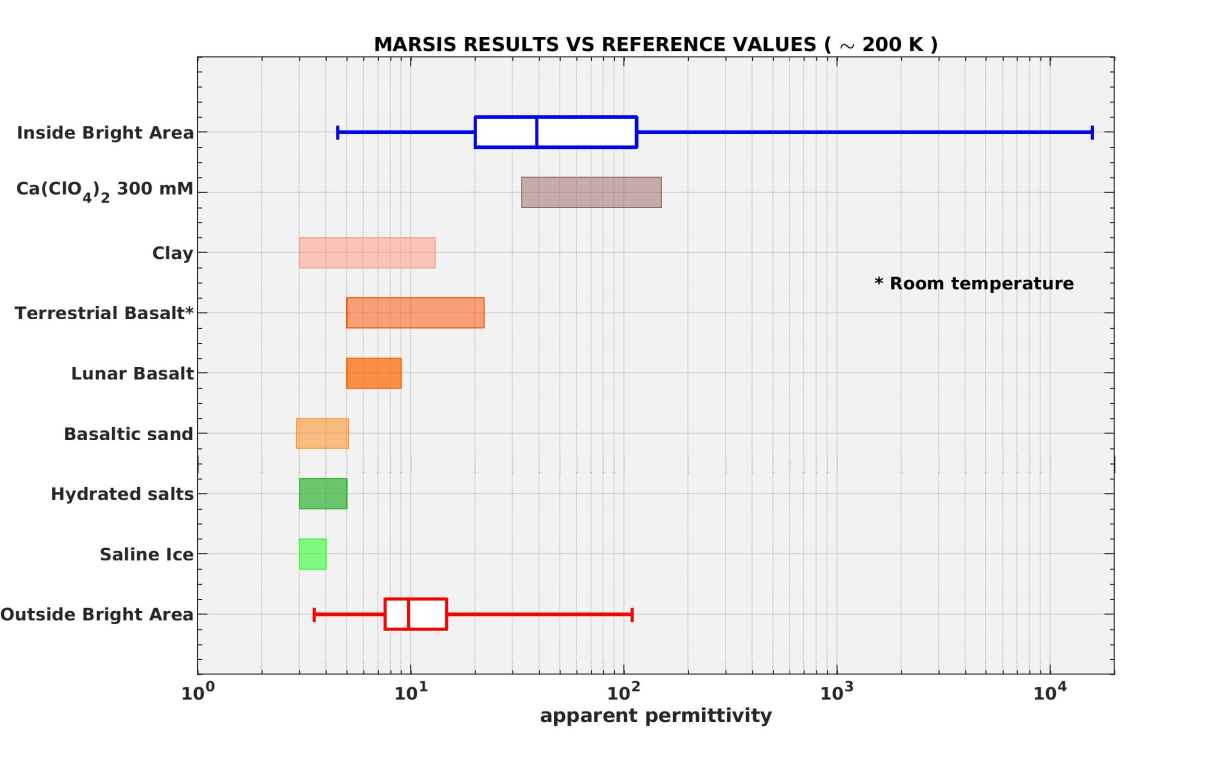The search for liquid water below the South Polar Layer Deposits: where we stand?
- 1Roma Tre University, Mathematics and Physics, Italy (elena.pettinelli@uniroma3.it)
- 2Department of Space Studies, Southwest Research Institute, Boulder, USA
- 3Centre for Astrophysics, Institute for Advanced Engineering and Space Sciences, University of Southern Queensland, Toowomba, Australia
- 4IRA – INAF Bologna, Italy
Introduction
Bright basal reflections detected by MARSIS at Ultimi Scopuli (Orosei et al., 2018; Lauro et al., 2021) started a wide scientific debate on the possible materials capable to generate such strong echoes from the base of the South Polar Layers Deposits (SPLD). Different interpretations were suggested: some involving the presence of briny water at the base of the SPLD (Orosei et al., 2018; Lauro et al., 2021; Mattei et al., 2022; Stillman et al., 2022) and others the existence of conductive materials, like saline ice and hydrated clays (Bierson et al., 2021; Smith et al., 2021) or ilmenite-rich basaltic rocks (Grima et al., 2022).
The original study (Orosei et al., 2018) was based on an inversion approach of MARSIS data (Lauro et al., 2019) from which the basal permittivities were retrieved. Such permittivity values are estimated from the amplitude of the reflected signal (Orosei et al., 2018), which does not allow to separately compute real and imaginary parts of the complex permittivity but only the apparent permittivity (ea) (Mattei et al., 2022). This is a real single quantity (to not be confused with the real part of permittivity, e’) that accounts for both polarization and conductive processes and fully describes the dielectric property of a material. In other words, the apparent permittivity is the physical quantity associated to a material lying below the SPLD that MARSIS measure.
The analysis of MARSIS data at Ultimi Scopuli defined the presence of two distinct distributions of apparent permittivity values. A distribution with high values, inside the so-called bright area, which were interpreted as evidence of basal salty liquid water and a distribution with low values typical of dry rocks/soil, outside the bright area (Orosei et al., 2018). The presence of other wet areas was subsequently confirmed applying a different analysis based on a signal processing approach commonly used in terrestrial Radar Echo Sounding (RES) studies to discriminate between wet and dry subglacial basal conditions (Lauro et al., 2021). Moreover, other indirect evidence supports the existence of liquid water below the ice at Ultimi Scopuli (Carrer and Bruzzone, 2021).
Results and discussions
The main argument against the possible presence of basal briny water is the very low temperature inferred from thermal models at the base of the SPLD (~180K), which was believed to require a large amount of salt to maintain the water in a liquid state (e.g., Sori and Bramson, 2019). Based on laboratory measurements, however, recent papers have discarded such requirement showing that few hundreds of mM of perchlorate salts are capable to maintain the water liquid at temperature lower than 200K (Mattei et al., 2022; Stillman et al., 2021; Stillman et al., 2022). Moreover, neither dielectric theory nor extensive experimental data support the hypothesis that saline ices or hydrated salts and clays can produce the bright basal reflections detected by MARSIS at the base of the SPLD (Mattei et al., 2022; Stillman et al., 2022). On the other hand, the largest amount of ilmenite content detected so far on Mars is £5% (e.g., Morris et al., 2006) which is largely insufficient to create strong radar basal reflections (Hansen et al., 1973). Another puzzling aspect in this controversy, is the presence of other bright areas detected by MARSIS below the South polar cap, sometime where the ice is thinner than 1.5 km (Khuller and Plaut, 2021). It should be notice, however, that the data analyzed by Khuller and Plaut (2021) are not the same (on-board standard mode) as those used in Orosei et al. (2018) and Lauro et al. (2021) (super frame and flash memory mode).
We present here the results of a large literature review on the dielectric properties of the materials suggested to be present at the base of the SPLD, as a function of temperature and composition. For these materials we computed the apparent permittivity which we compared to the apparent permittivity values retrieved by MARSIS (Fig.1). The results are discussed in the framework of the thermal state at the base of the SPLD and show that only perchlorates solutions can generate the basal bright reflections detected by MARSIS at Ultimi Scopuli.

Fig.1 Box plot of the apparent permittivity. The plot indicates the basal apparent permittivity retrieved inside the main bright area (blue) and outside the bright areas (red). Color bars indicate a range of apparent permittivity values for several lithologies potentially present at the base of the SPLD, measured mostly at MARSIS frequencies and 200 K.
References
Bierson, C. et al. Geophysical Research Letters, 48(13), doi.org/10.1029/2021GL093880, (2021).
Carrer L. and L. Bruzzone, IEEE Transactions on Geoscience and Remote Sensing, vol. 60, pp. 1-15, 2022, Art no. 4600915, doi: 10.1109/TGRS.2021.3111814.
Grima, C., et al. (2022). Geophysical Research Letters, 49(2), e2021GL096518, doi.org/10.1029/2021GL096518.
Khuller, A. R., & Plaut, J. J. (2021). Geophysical Research Letters, 48(13), e2021GL093631, doi.org/10.1029/2021GL093631
Lauro, S. E., et al. (2019). Remote Sensing, 11(20), 2445. Remote Sens. 2019, 11(20), 2445, doi.org/10.3390/rs11202445.
Lauro, S.E., et al.
Mattei, E., et al. (2022). Earth and Planetary Science Letters, 579, 117370, doi.org/10.1016/j.epsl.2022.117370.
Morris, R. V., et al. (2006). Journal of Geophysical Research: Planets, 111(E2).
Orosei, R., et al. (2018). Science, 361(6401), 490-493, doi: 10.1126/science.aar7268.
Smith, I. B., et al. (2021).
Sori, M. M., & Bramson, A. M. (2019). Geophysical Research Letters, 46(3), 1222-1231, doi.org/10.1029/2018GL080985.
Stillman, D. E., et al. (2022). LPI Contributions, 2678, 2133.
Stillman, D. E., et al.(2021).LPI Contributions, 2614, 6028.
How to cite: Pettinelli, E., Lauro, S., Mattei, E., Cosciotti, B., Stillman, D., Caprarelli, G., and Orosei, R.: The search for liquid water below the South Polar Layer Deposits: where we stand?, Europlanet Science Congress 2022, Granada, Spain, 18–23 Sep 2022, EPSC2022-1024, https://doi.org/10.5194/epsc2022-1024, 2022.

